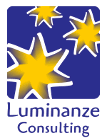Categories
- conferences (1)
- government (5)
- human factors (2)
- humor (1)
- Mobile (1)
- online communities (2)
- photography (1)
- psychology (3)
- research-practice interaction (2)
- SIGCHI (1)
- social media (1)
- transportation (1)
- Uncategorized (5)
- usability (8)
- usability testing (2)
- UX community (2)
- UX design (4)
- UX in Govt Book (1)

A Seminar and a Panelist Statement
I recently participated in a Dagstuhl seminar called “Demarcating User eXperience”. This 2.5-day workshop brought together 30 UX researchers and practitioners into an Eighteenth-Century manor house cum computer science conference center, just outside a tiny German village, to define the boundaries of the field of UX and begin writing a white paper about it. The seminar’s organizers described the problem this way:
The concept of user experience (UX) is widely used but understood in many different ways. The multidisciplinary nature of UX has provoked several definitions and perspectives to UX, each approaching the concept from a different viewpoint.
UX is seen as a holistic concept covering all aspects of experiencing a phenomenon, but we are facing the point where UX has become a concept too broad to be useful in practice. Practitioners have difficulties to understand the concept and to improve UX in their work, and researchers rather use some other term to make their research scope clear.
So our job was to “demarcate” UX.
Most of the group was from academia, so I set myself the goal of keeping some level of focus on practitioners’ needs, to maintain a balance. Each participant had to prepare a poster to present at the beginning of the seminar; mine is at http://www.luminanze.com/writings/DagstuhlPosterBuie.pdf (note: PDF). My main point was this:
UX already has a thriving practitioner community.
We must address their needs.
After the introductions were complete, we spent the next few days discussing UX — what it is, how it’s measured, how long it lasts, how to design for it — until finally our time ran out. (We could have gone on a lot longer, I suspect.) Fortunately, I wasn’t the only one urging that we consider design, and we ended up adding to the outline of the white paper a section on design for user experience.
At the end, we talked about next steps, in particular how we could publicize the seminar’s results. Among other things, we decided to submit a panel proposal to the CHI2011 conference. Jofish Kaye agreed to recruit the panelists and prepare the proposal; and two days ago when I asked him how it was going — surprise! — he added me to the panelists. This meant I had to write a position statement.
Now, I’m pretty good at writing short, pithy comments, such as tweets and Facebook statuses. A statement of two paragraphs, however, was much more daunting. But I managed, and here’s what I wrote:
“User experience” abounds and thrives in the practitioner community. Events and organizations identify themselves with the “UX” label — from “UX Magazine” (http://uxmag.com), to Adaptive Path’s “UX Week” conference (http://www.uxweek.com), to the various “UX Book Clubs” (http://uxbookclub.org), to the titles of numerous practitioner books. Nowhere is the label more evident than on Twitter: People and organizations use “ux” in their handles (@lynneux, @uxmike, @inspire_ux, @ux_jobs, @uxfactory, @ux_dc, etc. etc.), in content-related hashtags (#ux, #uxdesignjobs), and even in social hashtags related to the community (#uxsters, #uxlovelies, #uxboots). Even the Usability Professionals Association titles its magazine “User Experience”.
As practitioners, we generally agree that we are not designing experiences per se; “UX design” is just shorthand for designing for experience. We do lack a rigorous definition for “user experience” (we often refer to “DTDT” — “defining the damn thing” — to express the difficulty of agreeing on it), but I suspect we don’t actually need one. To design for experience, we don’t have to decide whether “experience” is immediate (e.g., three seconds) or it lasts from anticipation through memory of use; we need only recognize that it occurs throughout these phases and consider them all as we design. To create products that give users experiences along the lines of what we have in mind, we conduct user research and employ other time-honored as well as innovative design and evaluation techniques. We treat user experience as a focus in everything we do in our practice (see http://explainux.com), and most of us are passionate about giving our users good experiences. Academic research can help by paying attention to the issues of practice and by making sure we know when it has discovered something that can make us more effective in realizing these goals.
Unfortunately, space limitations meant that only a very small part of each panelist’s statement made it into the submitted proposal. I think the proposal turned out well, though, and I’m optimistic that the panel will happen. Stay tuned.
(I will write more about the seminar in a later post. For now you can see our photos on Flickr.)